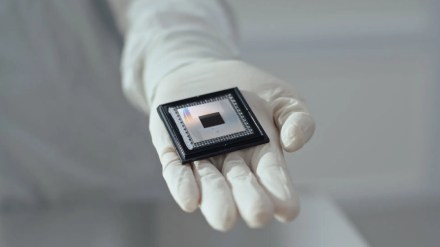Microsoft’s announcement of its Majorana 1 quantum chip marks a historic moment in the field of quantum computing. Unlike Google’s and IBM’s quantum processors, which focus on increasing the number of qubits, Microsoft is taking a different approach by prioritising stability and scalability. This is important for the future of quantum computing as this field deals with a major limitation — correcting errors.
Simply put, digital computers use binary computing (bits), meaning they process data in strict 1s and 0s. In other words, any calculation undertaken on a digital computer can be done in only one set of numbers at a time. Quantum computers, on the other hand, use qubits, which can exist in multiple states at once, potentially making them exponentially more powerful for certain tasks. This is because there’s no such limitation of sequential computing and several tasks can be done simultaneously.
At the core of Microsoft’s innovation is a new type of qubit, the building block of quantum computers. Majorana 1 uses a special kind of particle that is believed to make qubits more reliable. In simple terms, this could mean fewer errors and a much greater potential to scale quantum computers to the size needed for real-world applications. Google’s recent progress has focused on increasing qubit count and reducing errors through improved hardware and error correction techniques.
Microsoft, however, aims to solve the problem at its root by developing qubits that are naturally more stable. While this sounds promising, Microsoft has yet to provide performance data, so it remains to be seen whether this approach will succeed.
Quantum computing is not just a futuristic idea as it has the potential to revolutionise industries by solving problems that are impossible for traditional computers. From designing new materials to discovering life-saving drugs, the impact could be enormous. Microsoft believes that with enough stable qubits, quantum computers could help tackle complex global challenges like reducing microplastic pollution or creating self-repairing materials for construction and healthcare. Further, quantum computers could vastly improve artificial intelligence (AI), accelerating machine learning processes and making AI models more efficient.
Microsoft envisions a future where AI and quantum computing work together, allowing researchers to develop innovative solutions in record time. The combination of these two technologies could redefine how industries approach problem-solving. One big area of concern though is that the power of quantum computing poses serious security risks because it could easily break through the encryption technology currently in use to protect data, including national secrets.
Quantum computing is not a replacement for traditional computing. Instead, it will likely work alongside existing technologies to solve specific, highly complex problems. Traditional processors and graphics processing units will continue to dominate everyday computing needs, while quantum computers will be reserved for specialised, high-impact applications. While the potential is enormous, quantum computing is still in its early days, and without real-world results it’s too early to declare a winner in the quantum race.
Microsoft estimates that a useful quantum computer could be built between 2027 and 2029. Whether its unique approach will lead to a breakthrough remains uncertain, but one thing is clear: the competition to build the first practical quantum computer is heating up, and each advancement brings us closer to a future where quantum computing could bring about a major transformation. The coming years will be crucial in determining which approach — error-corrected qubits or inherently stable qubits — will prove most effective.
